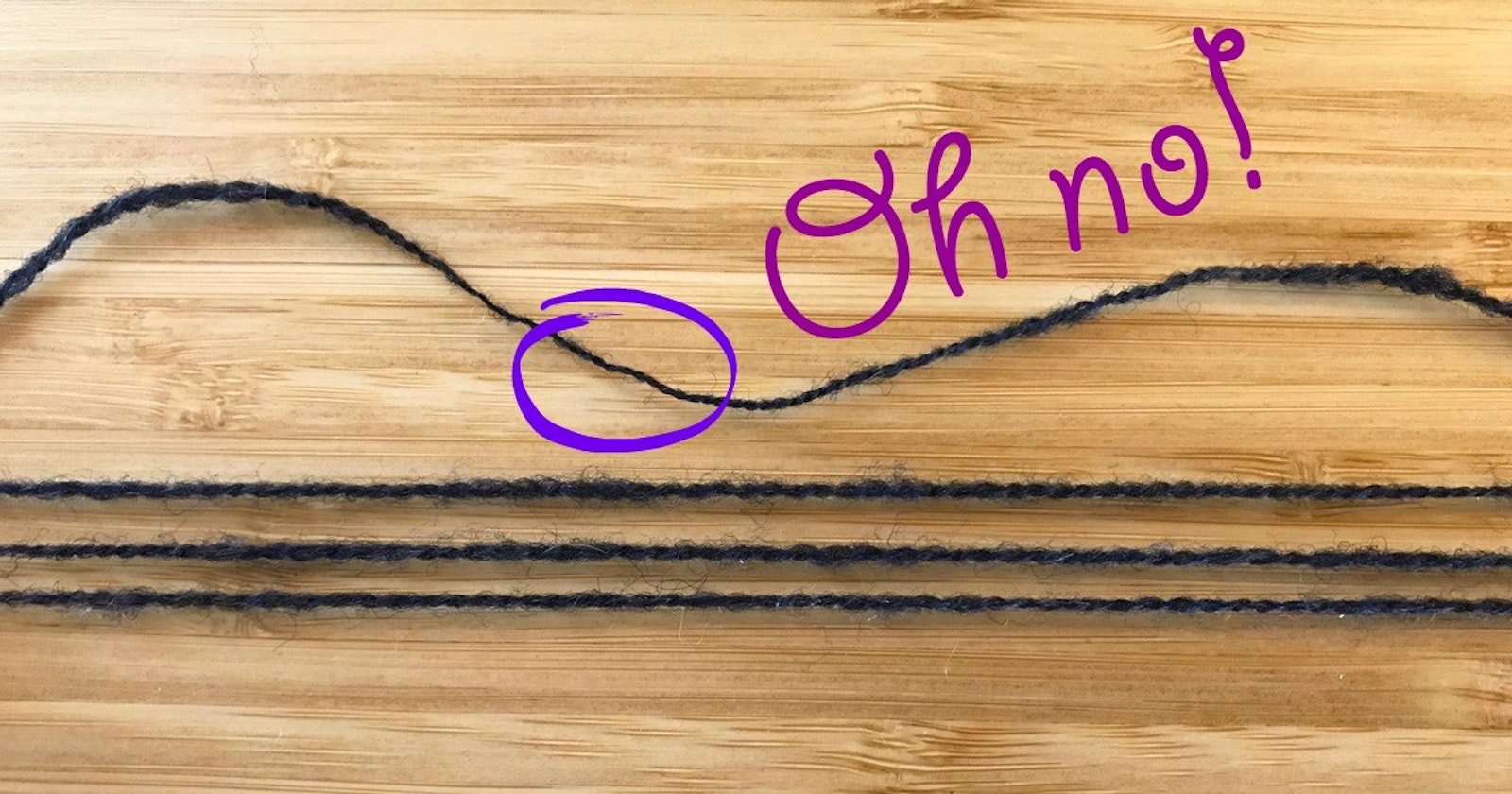My Shetland Half-Hap is finally finished—it was a fun handspun lace project from beginning to end. Unlike many knitting projects, a classic hap often begins by casting on a single stitch and ends without ever binding off. (It almost sounds like a knitting riddle, doesn’t it?) No matter the type of handspun lace project you might take on, here are some helpful techniques that can help smooth your path if you run into slubs or lose your knitting mojo.
Thin spot? Just break your yarn, remove the flaw, and rejoin your yarn. (No one will ever know!) Photos by Kate Larson
1. Dump the slubs.
It happens. When working with handspun or millspun yarns, we can run into errors, knots, thick spots, or thin spots that can stand out in an open, lacy pattern. Invisible or nearly invisible yarn splices, such as the Russian Join, can allow you to make it disappear before anyone ever notices. (Unless you post it online!)
With practice, a Russian Join is quick and means that you don’t have ends to weave in later! For full written instructions, check this post.
2. A thousand rows of narrow lace edging . . . really?!
Finishing a knitted lace piece with an attached lace edging is fantastic. This technique typically creates a narrow lace edge where every other row is knitted with a body stitch, eliminating live stitches with a stretchy, pointy finish. However, for the small hap I just completed, which had about 1,000 rows of lace edging to complete, this is sometimes tedious enough to land a project in the “I can’t be bothered to finish this” pile.
For projects requiring many rows of just a few stitches, as in narrow lace edges and entrelac blocks, knitting back backward and purling back backward can virtually erase the tedium. Instead of working the row of stitches, turning the work, and working the next row, knitting back backward means that every row is worked from the RS, and the work is never turned. Liberation! Work your row as usual from right to left and immediately work back, left to right. Read about it here.
Easy points with blocking wires.
3. Getting pointy points.
The aforementioned pointy lace edging created by my 1,000 rows of lace can sometimes be a challenge to block. Before I invested in a set of >blocking wires, I struggled to get the points to be consistently spaced and stretched. Once I purchased a set of blocking wires, though, I’ve never looked back. They make my finishing faster and better—well worth the investment!
Share your best handspun lace tips with us in the comments!
—Kate



